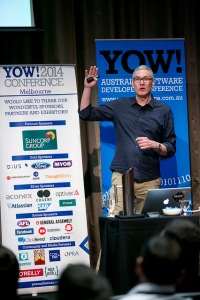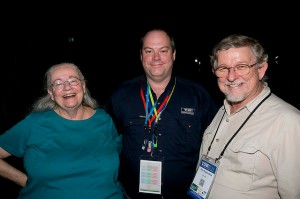 Tony and Craig are at YOW! Conference and in the hallway ambush Scott Shaw, the Director of Technology (Australia) at ThoughtWorks and talk about the state of microservices and Agile:
Tony and Craig are at YOW! Conference and in the hallway ambush Scott Shaw, the Director of Technology (Australia) at ThoughtWorks and talk about the state of microservices and Agile:
- Scott’s YOW! talk “Avoiding Speedbumps on the Road to Microservices“
- Microservices are just a different way to build applications that get away from monoliths
- Beth Skurrie, Evan Bottcher, Jon Eaves case study at YOW! – “The Odyssey – From Monoliths to Microservices at realestate.com.au“
- Essentials for microservices include Domain Driven Design, security and identity and change management
- Simon Brown talk at YOW! – “Agility and the Essence of Software Architecture“
- Cloud and infrastructure as code has changed the way we look at applications and have allowed microservices
- The essence of Agile is the team taking ownership of the business success of whatever it is they are building and keeping that ownership over the longer term
- Microservices take advantage of Conway’s Law – the teams closest to the systems should own them or change your structure to mimic the systems you want to look after
- There should be no difference between maintenance and evolution – it is all one of the thing that goes towards the success of the business
- Adrian Cockcroft defines microservices as “a service-oriented architecture composed of loosely coupled elements that have bounded contexts”
- Microservices should be no bigger than a concept that fits in your head
- Sam Newman book “Building Microservices“
- Agile approaches that are evolving include Docker and functional programming languages (especially Scala, Clojure and Go), the importance of craftsmanship and skills
- Defending the Free Internet
- ThoughtWorks Technology Radar
- Microservices in a Nutshell by Martin Fowler and James Lewis
TheAgileRevolution-102 (28 minutes)





